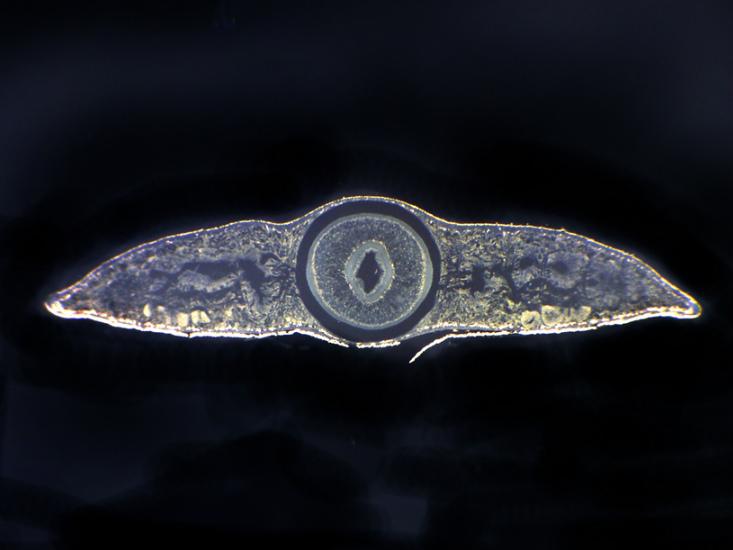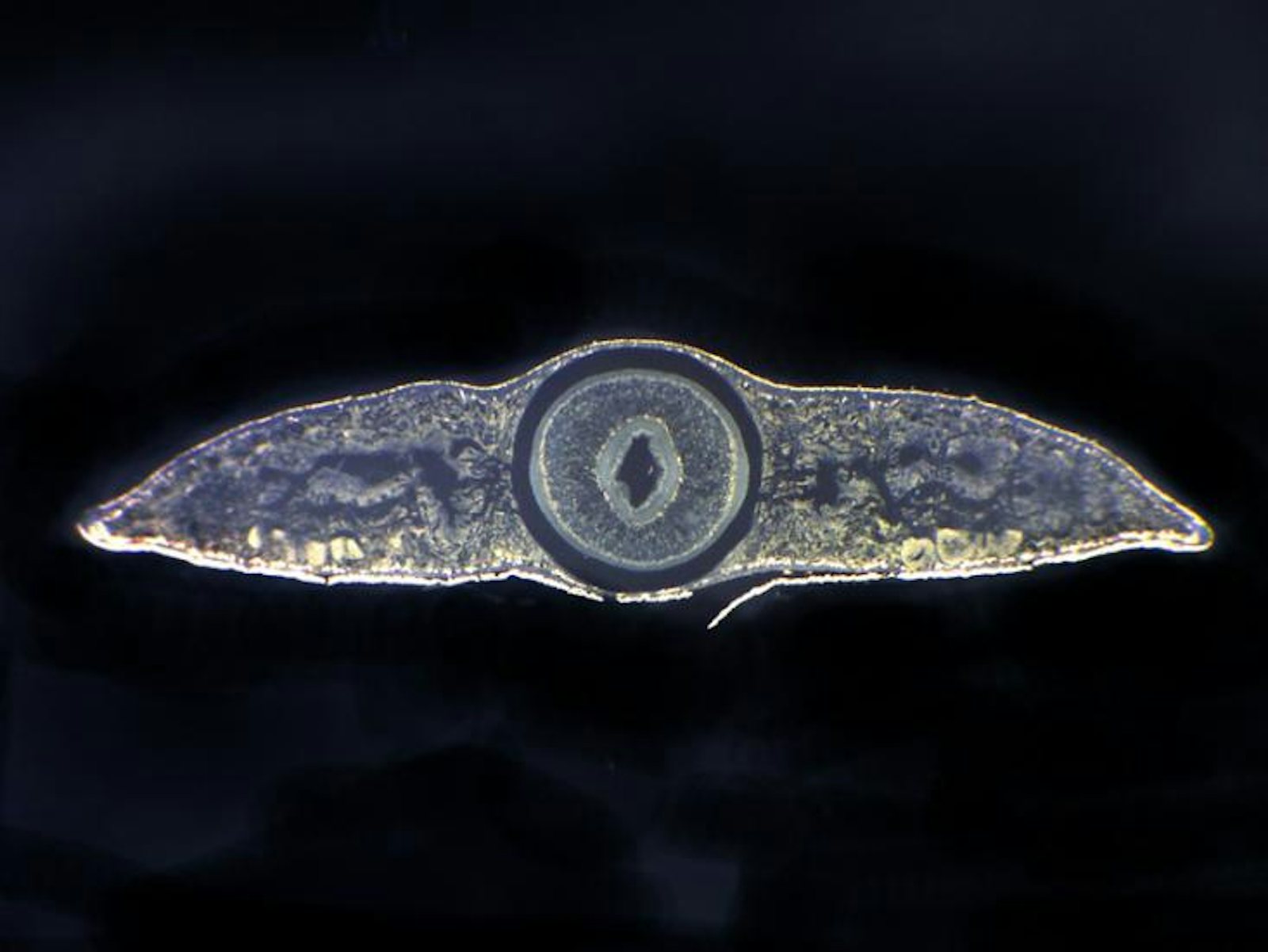
Earlier this year, scientists published a bizarre finding: A decapitated flatworm that grows a new head seems to retain memories from its old one. Weird—but not even close to the weirdest finding in the annals of flatworm memory research. Half a century ago, experiments by James McConnell the University of Michigan suggested memory in flatworms could be transferred through cannibalism. That’s right, one flatworm could learn the memories of another by eating it.
It’s easy to dismiss the flatworm, also known as a planarian—a centimeter-long brown wisp of a thing with googly eyes that peer at you through the microscope. When McConnell first began studying them in the 1950s, his colleagues didn’t even believe invertebrates could be conditioned like rats or mice. He proved them wrong and took his experiments in ever more extraordinary directions.
McConnell began by simply taking advantage of the planarians’ remarkable regeneration abilities. Cut the animal into as many pieces as you physically can, and those teeny-tiny, barely visible pieces will regenerate into whole worm—googly eyes and all. A piece as small as 1/279 of a planarian will grow into a complete creature. In a more gruesome twist, cutting halfway down the middle of a flatworm, starting at the front, eventually yields an animal with two heads.
For his initial experiments on memory, McConnell simply chopped his conditioned planarian in two and tested the regenerated halves. The original worm had been conditioned to associate light with an electric shock, twitching in response to the light even when no shock was given. The tail half, which had grown a new head, learned this association more quickly than an untrained planarian. (This may sound awfully similar to the “new” finding published this year. Read on.)
In a follow-up experiment, he chopped regenerated planarians in half again and again, testing newly regenerated worms that did not contain any parts of the original trained worm. Still, these regenerated planarians seemed to retain some memory. McConnell began thinking that memories were encoded not in the structure of the brain but in individual molecules, perhaps RNA. The 1950s were heady with the discovery of DNA’s double helix, but RNA remained more mysterious.
To test chemical memory, McConnell started grinding up conditioned planarians and feeding them to others. “Our first pilot study gave us such unbelievable results,” he wrote in a paper titled, “Memory transfer through cannibalism in planarians” (PDF). Even before getting this work into a scientific journal, he was already self-publishing his cannibalism-and-memory research for years in his sometimes-satirical, sometimes-serious journal, The Worm Runner’s Digest. The memory research was for real, but it ran alongside articles such as “Learned Helplessness in Pet Rocks (Roccus pettus).”
Some scientists were skeptical of the research—that it ran next to obvious satire certainly didn’t help—but it was so intriguing. McConnell became a media darling with his sensational talk of “memory pills” and “memory injections.” Over 200 independent research groups would try to replicate those results in animals as diverse as rats, honeybees, and octopi. Some published results corroborated McConnell’s findings, but more and more were coming up empty. Eventually, researchers stopped trying.
Today, memory transfer is a cautionary tale of how a splashy study can derail a field. McConnell has been roundly criticized, both for seeking out publicity and for doing sloppy science. In a backhanded compliment, one critic called him an “innovator” who “raced from one exciting phenomenon to the next without comprehensive experimental analysis or adequate controls” (PDF).
In McConnell’s lab, training and testing each worm could take a tedious 10 to 12 hours spread over several days—plenty of time for bias to creep in without the safeguard of proper controls. But the study published this year, using a more trustworthy procedure, matched McConnell’s findings on decapitated flatworms.
The team at Tufts University trained worms to overcome their natural aversion to brightly lit and open spaces with the lure of food, and the ones with regenerated heads did indeed learn to ignore their aversions more quickly. Crucially, the movement of the flatworms was tracked automatically with cameras—less tedium and less potential for bias. The scientists hope that the comparative ease of automated system will lead to more planarian research, and their results suggests some trace of the memory stored in neural circuits outside the brain. It’s easy to dismiss the misguided research of scientists past, knowing all we know today about memory. But perhaps more tantalizing are the parts of McConnell’s research that may turn out to be right.
Sarah Zhang is a science journalist based in Washington, DC. Follow her on Twitter @sarahzhang.






























